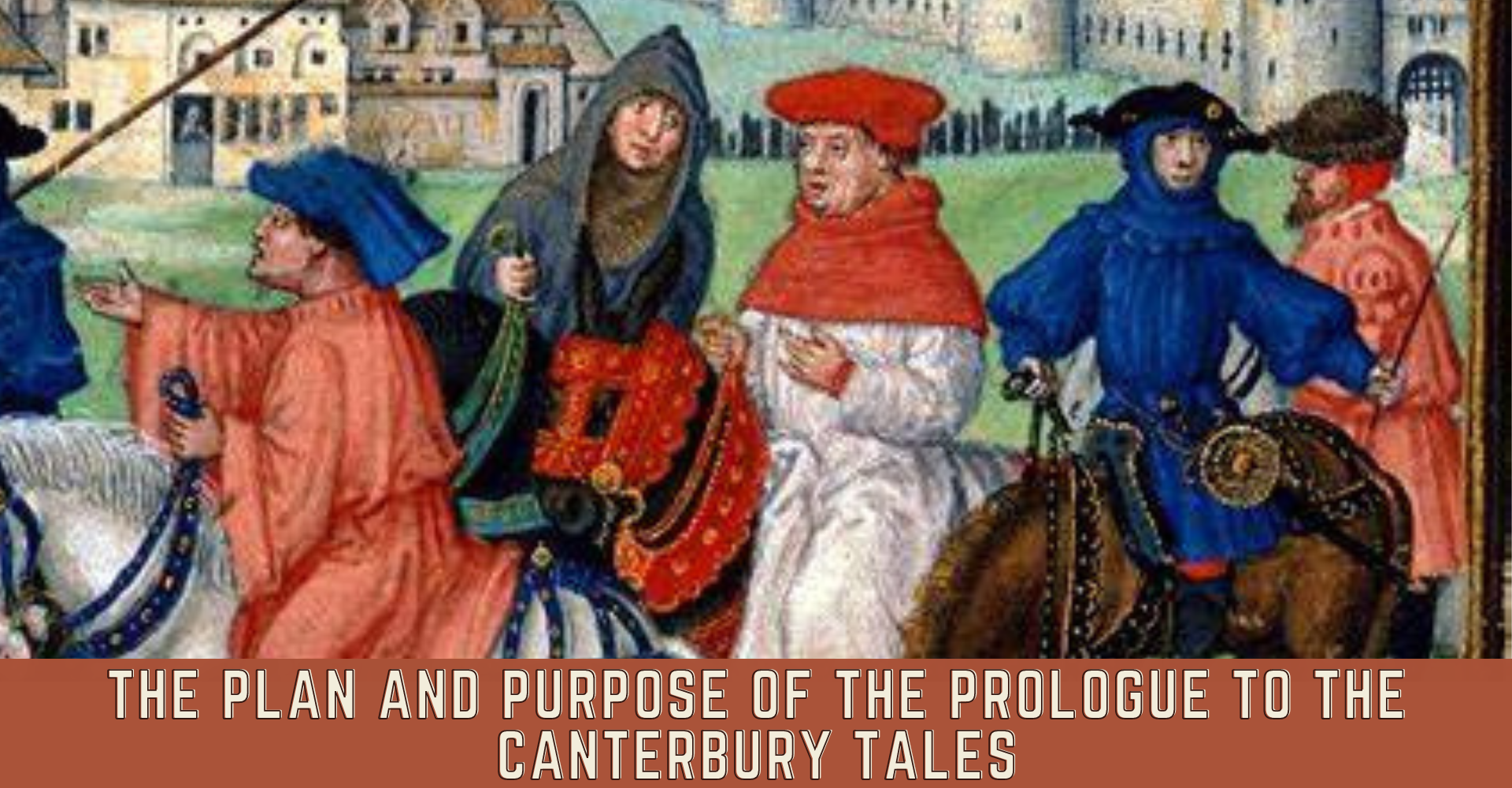The Prologue is so interesting because it suggests the framework of The Canterbury Tales and paints a picture of national life. Boccaccio’s Decameron was an example to Chaucer. But Chaucer goes beyond his model, and gives a new significance to his work by his insight and perception. by his genial humour and humanism.
In the Prologue, the poet represents himself as alighting, one spring evening, at the Tabard Inn in Southwark, a suburb at the southern end of London Bridge, where later the famous Elizabethan play-houses, Shakespeare‘s among them. were to spring up. Southwark was the place of departure and arrival for all south-of-England travel. and especially for pilgrimages to the shrine-of St. Thomas a Becket at Canterbury.
A company setting out on such a pilgrimage gathers in an inn. Chaucer makes their acquaintance and forms one of the party. The pilgrims art thirty-two in all. including the poet. There is a Knight lately come from foreign wars, he has fought in Prussia and Turkey, jousted in Tramisene, and been present at the storming of Alexandria-a high-minded. gentle-mannered, knightly adventurer, a type of the courteous, war-loving chivalrous person whose class-war was rapidly disappearing With him is his son, a young Squire, curly-haired and gay, his short white-sleeved gown embroidered like a mead with red and white flowers. He sums up in himself the gifts and graces of a brilliant youth. The servant is a Yeoman, in coat and hood of green, a sheaf of peacock arrow under his belt. a mighty bow in his hand, and silver image of Saint Christopher upon his breast. He is the type of that sturdy English yeomanry which with its grey goose shafts humbled the pride of France, Crecy and Agincourt.
There is a whole group of ecclesiastical figures, representing the different interests of the medieval church. Most of them are satirical portraits, exposing in their worldliness and materialism the abuses which had crept into the Church and which Wycliffe denounced. First of all. there is a Monk who cares only for hunting and good cheer. his bald head shines like glass. his bright eyes roll in his head he rides a sleek brown palfrey, and has “many a dainty horse” in his stables. His sleeves are trimmed with fur at the wrists, his hood is fastened under his chin with a gold love- knot. Another figure joining the party is “Madame Eglantine,” the Prioress. She is a teacher of young ladies, speaking French “after the school of Stratford-Atte-Bowe.” She is exquisite in her table-manners, affecting as well as she can the stately behaviour of the court Other ecclesiastics are hangers on and caterpillars of the Church: the Friar, intimate with hospitable Franklins, innkeepers and worthy women and despising beggars and lazars: the Summoner. repulsive person with “fire-red Cherabin face.” the Pardoner with his bag full of pardons “come from Rome all hot.” and bits of cloth and pig’s bones which he sells as relics of holy saints. Chaucer, treats the evil churchmen, with good-humoured tolerance. He produces a better effect by setting beside them, as a type of the true shepherd of the Church, a “poor Parson.” such as, partly under the influence of Wycliffe, was coming forward to reform the Church. Chaucer paints the character of the Parson. poor in the world’s goods, but “rich of holy thought and work.” with a loving and reverent touch. The parson’s brother travels with him-a Plowman, a true swinker and a good,” who helps his poor neighbours without hire and loves them as himself. He reminds us of Piers the Plowman. There is a group of guild-members, in the livery of their guild, all worthy to be aldermen. They, along with the merchant, represent the mercantile and manufacturing class. They point to the future rise of England as a great commercial power. There is the Wife of Bath, almost a modern feminist figure, hit off with masterly humour and realism a permanent human type. She has had “husbands five at church-door : ‘and though ‘somdel deaf’, hopes to live to wed several others. She rides on an ambler with spurs and scarlet hose on her feet, and on her head a hat as broad as a buckler. In fact, they represent the entire range of English society of the fourteenth century, leaving out only the highest aristocracy and the lowest order of villains or serfs.
Also Read :
- Compare Hamlet with Macbeth, Othello and other Tragedies
- “The Pardoner’s Tale” is the finest tale of Chaucer
- Prologue to Canterbury Tales – (Short Ques & Ans)
- Confessional Poetry – Definition & meaning
At supper the host of the Tabard Inn proposes that on their journey to Canterbury each of them should tell two tales from this side and two more on their return journey, and thus to relieve the tediousness of the way. He offer to travel with them and to act as the master of ceremonies. And the rest of the pugruns are to submit to Tus judgement as to which of them tells the best story: and the best story- teller among them is to be given a supper at the general expense. This decision being accepted by all, they set out on their journey early next morning. Lots are drawn to decide who shall tell the first tale. The lot falls to the Knight.
Purpose :
Chaucer’s purpose in writing the Prologue was primarily to portray the social life of fourteenth century England. In his portrayal of society, he takes a typical representative of each class and profession of contemporary England and portrays him with the brush of a painter and lively interest and humour of a humanist. Thus, we get a gallery of portraits in all the realistic colours of contemporary social life.
PLEASE HELP ME TO REACH 1000 SUBSCRIBER ON MY COOKING YT CHANNEL (CLICK HERE)











